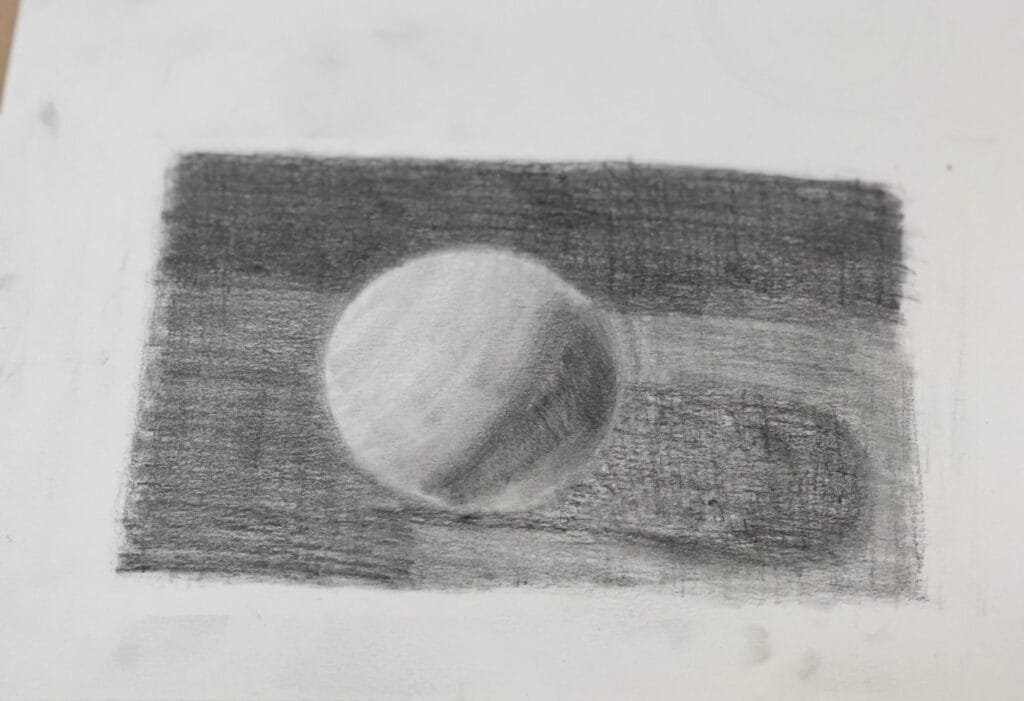Light hitting a simple ball from a particular angle – my interpretation
Today I took my first art class.
Rather – I put a conscious effort towards remaining engaged. As a kid I very much disliked art, maybe because I was not good, or maybe it was because I had an obsession with the work being “perfect”.
It paralyzed me, and I would never undertake artistic practices. How silly, because it could never improve in quality without the vital practice required, but the overwhelming feeling that I was failing would change my physical and mental state, to the point of anger and wanted to physically act out my frustration.
This is how I would describe my reaction today. In fact, I wanted to punch the table and cry. However, today I am a different person. I step into the river again but not as the same boy/man. I started writing down what was happening, and lessons I have learned like “learn through doing the work, only ask questions when it is an absolute necessity.” “Why do I feel this frustration and how can I control my response to it?” “How do I find what is my style and what is disingenuous?” “How can I remove the rules I have unnecessarily created and use my independent thinking to move forward?”
“In fact, I was an artist all along, simply starting with the wrong brush on the wrong canvas.”
I have had a major perspective change over the years, notably through my “movement practice”. This practice has allowed me to explore more artistic experiences through movement of the body first and foremost, and initially movements that suit my liking. Movements involving strength with well defined standards were my specialty from the start. I liked winning and losing. I liked knowing what was right vs. wrong. I still do.
So, why is this important? Well, the further I researched my movement practice, the more I blurred the lines between the objective and the subjective. Sure, I could perform a push-up in a handstand, but could I add an element of rotation? Could I soften the edges? Could I do the same movement and focus on a different sensation? Could I use the movement in a sequence in order to express myself? This practice has changed the way I see myself. In fact, I was an artist all along, simply starting with the wrong brush on the wrong canvas.
I have learned so many lessons from building strength, dexterity, flexibility, mobility, grace, and more. I discovered the power of a process, why practice is so important, why there isn’t always a “right or wrong”, finding my style, and much more. It’s not about what the ball looks like, but what is discovered through the practice itself. This, learned from my teacher Ido was the “craftsman approach”. A craftsman is defined as “a person who is skilled in a particular craft.” The definition fails to account for how one becomes a craftsman. A topic I will cover in another blog.
I wish not to be the best “ball artist” in the world, but I do wish to continue practicing and learning from this medium. It clearly has a lot to teach me about myself. Maybe you can apply the same lessons to the things that make you the most uncomfortable, and find the courage to face them head on. I encourage you to first find your canvas and the brush that suits you. Use it to discover the craftsman approach, then use that approach to work with any brush or canvas you choose.
Rule #6
“Nothing is a mistake. There is no win and no fail. There is only make.”
John Cage
Kevin


